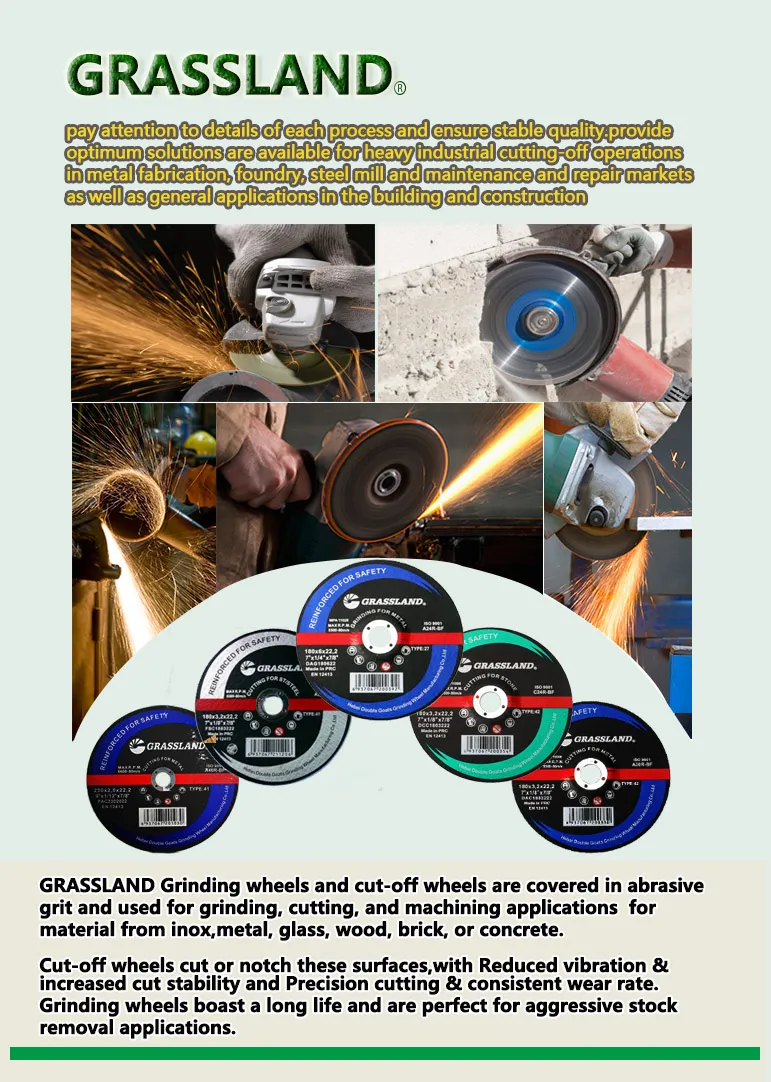Understanding Stone Grinding Wheels A Comprehensive Overview
Stone grinding wheels are essential tools employed in various industries for grinding, shaping, and polishing metals and other materials. These wheels have been used for centuries and continue to be vital in modern manufacturing processes. This article aims to provide an in-depth understanding of stone grinding wheels, their components, types, applications, and maintenance.
What are Stone Grinding Wheels?
Stone grinding wheels are circular discs made from a mixture of abrasive materials and bonding agents. The abrasive particles are the components that perform the cutting and grinding, while the bonding agents hold the particles together, providing the structural integrity needed for effective grinding. The combination of these materials determines the wheel's cutting efficiency, durability, and overall performance.
Types of Stone Grinding Wheels
1. Natural Stone Wheels Traditionally, grinding wheels were made from natural stones like sandstone, which were shaped into a circular form. These wheels are still used in some applications today, particularly in old-fashioned workshops.
2. Diamond Grinding Wheels These are made using diamond particles and are known for their superior cutting ability and wear resistance. They are perfect for applications requiring high precision and are widely used in the stone industry for shaping and polishing granite, marble, and other stones.
3. Aluminum Oxide Wheels These wheels are composed of aluminum oxide abrasive and are common in metalworking applications. They are versatile and can be used for grinding ferrous and non-ferrous metals, making them a favorite among machinists and manufacturers.
4. Silicon Carbide Wheels Known for their hardness and sharpness, silicon carbide wheels are ideal for grinding hard materials like ceramics, glass, and non-ferrous metals. They are frequently used in applications requiring fine finishes.
Applications of Stone Grinding Wheels
stone grinding wheel

Stone grinding wheels are employed in various industries, including
- Metalworking Used for sharpening, grinding, and finishing metal components to achieve desired shapes and surface finishes. - Construction Essential for shaping and finishing stone, marble, and concrete surfaces. - Automotive Used for grinding engine parts, brakes, and other components to ensure optimal performance and durability. - Manufacturing Employed in various production processes for efficient material removal and surface preparation.
Maintenance of Stone Grinding Wheels
Proper maintenance of stone grinding wheels is crucial for ensuring their longevity and performance. Here are some key maintenance tips
1. Regular Inspection Check wheels regularly for signs of wear, damage, or cracking. Ensuring the wheel is in good condition can prevent accidents and improve performance.
2. Cleaning Remove any metal shavings, dust, or debris after use to keep the wheel clean. This helps maintain the wheel's cutting ability and overall efficiency.
3. Proper Storage Store grinding wheels in a dry, cool place away from direct sunlight. This prevents moisture accumulation, which can damage the wheel.
4. Use Proper Speed and Pressure Adhere to the manufacturer's specifications for grinding speed and pressure to avoid overheating and ensure that the wheel remains effective.
Conclusion
Stone grinding wheels are indispensable tools in various industries, offering versatility and efficiency in material processing. Understanding the different types of grinding wheels, their applications, and maintenance practices can significantly enhance their performance and lifespan. Whether in a workshop or a manufacturing facility, selecting the right grinding wheel and maintaining it properly is key to achieving optimal results in grinding and shaping materials.
Post time:Oct - 17 - 2024

















